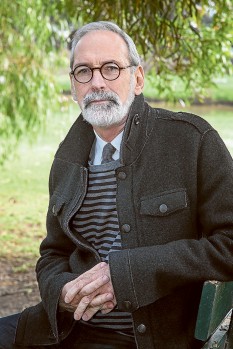
TWO doyens of the Frankston arts scene have left the stage.
The final curtain has fallen on Frankston Arts Centre manager Robin Batt’s two decades at the helm of council’s cultural headquarters and McClelland Gallery and Sculpture Park director Robert Lindsay will step down in July.
Ms Batt exited earlier this month with successor Andrew Moon, hired by the FAC in November, appointed arts and culture manager. Mr Moon was previously an executive at Arts Centre Melbourne for 23 years.
Mr Lindsay told The Times he decided not to seek a further contract extension at the McClelland Gallery and Sculpture Park in Langwarrin after 13 years, four as deputy director and nine in the top job.
“You establish what you’re doing and then move on for other people. I think the old idea of a job for life is an old idea.”
The fine arts expert, a Melbourne resident, believes “you should move on every decade or so” but will keep an eye on Frankston’s arts scene.
The installation of sculptures, including The Tree of Life by Phil Price, alongside Peninsula Link is an initiative Mr Lindsay would like to see further spread its roots.
McClelland hopes sculptures may be installed as part of the new $50 million Frankston train station redevelopment and Mr Lindsay believes Frankston should embrace the public display of sculptures throughout the city as a tourism drawcard.
“Frankston could be the sculpture city by the sea. It could be unique and marketed as cultural tourism,” he said.
“The most creative cities are the ones that flourish economically. We could create a new identity for Frankston.
“It’s the gateway to the Mornington Peninsula and could become a major site outside Melbourne for the development of the arts.”
“You could do something really special that would have an international profile and reinforce Victoria as the cultural capital of Australia.”
Mr Lindsay originally visited McClelland to install the Rodin exhibition and realised the gallery and park at that time “had so much potential”.
Annual visitor numbers hovered around the 30,000 mark in 2002 and now number more than 130,000. There were 24 sculptures on display 13 years ago and there are 112 now at the gallery and park.
Mr Lindsay said the biggest challenge McClelland faces is “a lack of money”.
Entry to the park is free.
“Many of the works here have been donated … we need wide community and government support. We have to raise 80 per cent of our annual budget.”
Dame Elisabeth Murdoch was a major donor before her death in 2013 at the age of 103.
Mr Lindsay said Dame Elisabeth and Neil Balnaves of The Balnaves Foundation had been “terrific” backers of McClelland during his tenure as director.
The gallery is advertising to find a successor to Mr Lindsay and he believes the arts hub is entering its “third phase” of development.
He said the first phase was its establishment by the McClelland family, its second phase relied on Dame Elisabeth’s support and the third phase will involve trying to gain wider community backing.
“Our present chair Lyn Williams is doing a superb job developing what I see as the third phase of development for McClelland.”
Mr Lindsay plans to do “a variety of things” after July “including a bit of writing and consulting”.
See mcclellandgallery.com for exhibition details and donation information. All donations are tax deductible.